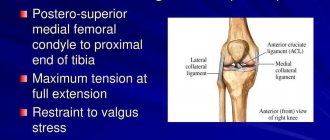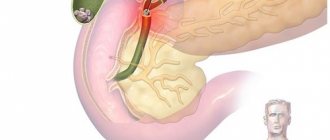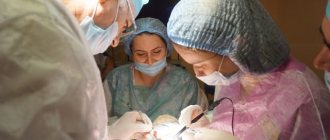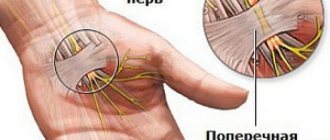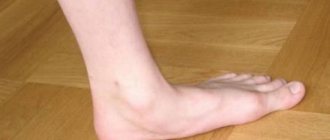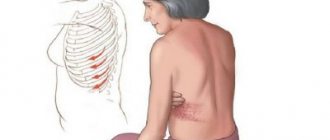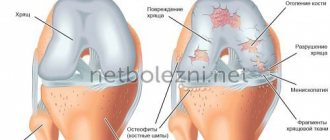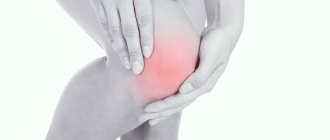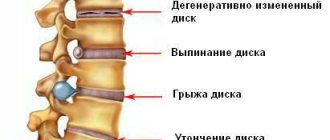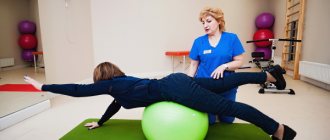In medicine, pain in the neck area is called cervicalgia. This term does not indicate a specific disease, but only indirectly indicates the presence of pathology. Cervicalgia can occur not only against the background of other diseases. The right side of the neck may hurt due to hypothermia, heavy physical activity, prolonged sitting or sleeping in an uncomfortable position.
Unilateral neck pain often indicates pathology of the musculoskeletal system, traumatic injuries to the spine, infectious, neurological or oncological diseases. Therefore, if such cervicalgia occurs, you should immediately go to the hospital.
Want to know why your neck hurts on the right side? Go see a doctor. He will examine you, prescribe the necessary tests and consultations with other specialists in order to make the correct diagnosis. Knowing the cause of neck pain on the right, doctors will be able to choose the most effective treatment for you.
Causes of severe neck pain on the right side
Sharp pain in the right neck most often occurs due to hypothermia, injury, pinched nerves or muscle spasms. In addition to severe pain, a person may be bothered by a feeling of numbness in the back of the head, painful stiffness in the shoulders, muscle weakness, or even impaired mobility of the upper limbs. In some cases, painful sensations are accompanied by an increase in body temperature and a feeling of numbness in the hands.
Prevention of pain in the right neck area
To prevent the occurrence of discomfort in the neck, as well as for a speedy recovery, you should take into account the following prevention tips:
- It is better not to lift weights or hold them for long periods of time.
- Do regular physical exercises for your neck, back and arms.
- Protect the body from possible hypothermia.
- Do not sit in the same position for a long time, try to change your body position.
- When sleeping, use an orthopedic mattress or orthopedic pillow.
Prevention will help reduce the risk of neck pain or eliminate a not very serious cause of such sensations.
Pain in the right neck is a warning sign that is worth paying attention to. Instant diagnosis will allow you to identify the cause of unpleasant sensations, and will also help prescribe the necessary treatment by a qualified doctor.
Occipital neuralgia
The disease is characterized by damage to the sensory nerves of the occipital plexus. A person with neuralgia has pain on the right side of the neck on the side and back. Unpleasant sensations intensify when turning and moving the head. Throbbing pain may radiate to the shoulder blade or collarbone. Many patients experience pain in the eye area.
Causes of occipital neuralgia:
- colds;
- hypothermia;
- injuries;
- overstrain of the neck and shoulder muscles.
Neuralgia responds well to treatment. With adequate therapy, they pass without any consequences. In the case of a prolonged course, neuralgia can develop into a neurotic stage, which is accompanied by structural changes in the nerve; Sensitivity in the back of the head may be impaired.
Occipital neuralgia is characterized by the absence of other neurological symptoms: there are no motor disturbances or sensory disorders in the neck, shoulder and upper limb.
Causes
There are quite a few causes of neck pain, and it is not always possible to immediately determine the source of the pain, and sometimes even with the help of instrumental research methods it can be difficult to determine the true cause of the pain. The main conditions causing neck pain are the following:
Neck sprain . A strained neck muscle can be caused by an injury that can cause the neck muscles and upper back muscles to spasm. Strained neck muscles can be the result of systematic static loads associated with poor posture, psychological stress or lack of sleep. Typically, symptoms of a neck strain include pain, stiffness and discomfort in the upper back or shoulder and symptoms can last up to six weeks.
Cervical spondylosis is degenerative changes in the vertebrae in the cervical spine, in which changes in the shape of the vertebrae and bone growths along the edges of the vertebrae (osteophytes) occur. Osteophytes can exert compression on surrounding tissues (including nerve structures). Research shows that almost 90% of nerve compression cases are caused by osteophytes. Moderate manifestations of spondylosis are a common involutional process associated with the aging of the body, while significant manifestations of spondylosis are a pathological degenerative process. Symptoms of cervical spondylosis may include neck pain or weakness, numbness or discomfort in the arms or shoulders, headaches, or limited neck mobility.
Discogenic neck pain . Discogenic neck pain is believed to be the most common type of neck pain. The cause of discogenic pain is morphological changes in the structure of one or more intervertebral discs. Characteristic symptoms of discogenic neck pain are pain in the neck when turning or tilting the head. Pain may intensify when the neck is subjected to prolonged static load, when the neck is in one position for a long time (for example, when driving a car, when working at a computer). The pain may be accompanied by muscle stiffness and muscle spasms. Discogenic pain may also radiate to the arm and shoulder.
Facet joint syndrome – The facet joints are located at the edges of the vertebrae and are most often damaged by whiplash injuries and are often the source of headaches. Another potential cause of facet joint damage may be the nature of the job, which requires frequent neck extension. Symptoms of facet joint syndrome in the cervical spine include pain in the middle or side of the neck, and some patients may have pain in the shoulder at the scapula, at the base of the skull, or in one arm.
Whiplash – Whiplash syndrome is caused by a traumatic incident of sudden hyperextension of the neck (forward – backward). The most common cause of this injury is a motor vehicle accident. Symptoms of whiplash include severe pain, muscle spasms, and decreased range of motion in the neck.
Cervical myofascial pain – myofascial pain is characterized by the presence of dense and painful points in the neck area. Myofascial neck pain can develop after injury or be caused by conditions such as psychological stress, depression or insomnia.
Diffuse skeletal hyperostosis - Diffuse skeletal hyperostosis is a syndrome in which abnormal calcification occurs in the ligaments and tendons in the cervical spine, resulting in tissue hardening. Many patients are asymptomatic, but some may experience stiffness, pain, and decreased mobility. Diffuse skeletal hyperostosis can occur not only in the cervical spine, but also in the thoracic and lumbar regions.
Cervical spondylogenic myelopathy occurs when there are degenerative changes that lead to narrowing of the spinal canal. Spinal stenosis can lead to damage (compression) of the spinal cord and neurological impairment. Therefore, in addition to pain, patients may have weakness in the limbs, poor coordination of movements, as well as dysfunction of the pelvic organs (intestines, bladder, erectile dysfunction).
Cervical Radiculopathy – Cervical radiculopathy occurs when the nerve roots are irritated by a herniated disc or other formation, such as a synovial cyst. Signs of radiculopathy may include pain, weakness, or sensory disturbances (eg, numbness, tingling) in the arms. The most common causes of cervical radiculopathy are degenerative changes in the cervical spine (osteochondrosis).
Retropharyngeal abscess
The patient develops acute pain in the neck on the right side, nasal breathing is disrupted, nasal sounds appear, and body temperature rises to 39-40 degrees. Pain in the neck on the right increases when swallowing, causing choking. For this reason, patients with a retropharyngeal abscess refuse to eat food.
To confirm the diagnosis, the patient undergoes pharyngoscopy. During the examination, doctors identify a spherical protrusion in the back wall of the pharynx. In the first days it is localized on the right side, later it shifts to the middle.
The head in patients with a retropharyngeal abscess usually takes a forced position. They tilt it back and tilt it to the side. Patients do this because they have a sore throat and neck on the right side.
Neck hurts after sleep: causes of pain
When the neck hurts, it hurts to turn after sleep, many people rush to apply a compress with vodka or camphor oil. Some people apply ice or, conversely, a towel soaked in warm water. This cannot be done, since the causes of pain can be very different - and some of them only aggravate the painful condition under the influence of cold or alcohol. Pain may be felt due to:
- Inflammatory processes occur in the body. They give severe acute pain, muscles and tissues swell.
- The person caught the infection. The pain is concentrated in the upper back, back or front of the neck. The only way to get rid of it is to eliminate the root cause disease.
- A tumor had formed in the upper part of the shoulder, causing the muscles, tissues and roots to be compressed.
- Vessels are affected. Pain sensations spread to the arms, head, chest and lower back. If the blood supply is disrupted, swelling appears and the muscles are in constant tension.
The most unbearable pain is often caused by osteoporosis. The patient may wake up in the middle of the night from terrible sensations - in this case, it is permissible to take a painkiller. In women during menopause, the spine becomes unstable, which also leads to pain.
If your neck hurts after sleeping on an orthopedic pillow, the height of the pillow may be to blame. High pillows are only suitable for sleeping on the side, as they provide good support for the neck and shoulder girdle in this position. For back sleepers, pillows with a maximum height of 10 cm and moderate firmness are recommended. It is advisable to buy a pillow with a recess for the neck. To sleep on your stomach, you should purchase a thin, soft pillow with a maximum height of 8 cm. Alternatively, you can do without a pillow at all or place it under your stomach to prevent pain in your spine. It is not recommended to sleep on your stomach every night, as this compresses the blood vessels in the spinal column area.
When the neck on the right side hurts after sleep, this may indicate a compressed vertebral artery. It is steamy and therefore provokes one-sided pain. A high-quality pillow filling will help solve the problem. The optimal materials are latex and memorix. Latex is durable, does not cause allergies, and even children are allowed to sleep on it. Memorix, upon contact with the human body, heats up and adapts to the contours of that body. You don't have to worry about overheating, since the filler is well ventilated.
Your neck may feel stiff in the morning because you decided to sleep longer than usual. The upper body had to remain in a static position for too long, and its circulation was impaired.
Finally, the cause of suffering can be a simple sedentary lifestyle, increased stress levels, and the need to regularly carry a heavy bag on your shoulder. Many people, under the influence of negative emotions, raise their shoulders, both or one, and tense their muscles. This gives them the psychological illusion of protection, but leads to neck pain.
Acute purulent diseases of soft tissues
In the neck area there are many anatomical formations, between which there is fatty tissue. Cellular spaces are separated from each other by cervical fascia. They form peculiar closed compartments in which inflammatory processes can occur. All of them are accompanied by pain in the neck on the front right.
- Furuncle . This is a superficially located dense nodule, in the center of which a necrotic core appears after 3-4 days. Depending on the location of the formation, a person’s neck hurts on the right front or back. The patient is also concerned about itching and swelling of the boil site;
- abscess . It manifests itself as redness of the skin, swelling and pain in the neck on the right front. Upon palpation, you can feel a soft round formation. Fluctuation indicates the presence of an abscess. This symptom indicates a local accumulation of pus;
- phlegmon . It differs from an abscess in the absence of a capsule that would protect the pus from the surrounding tissues. The inflammatory process spreads to the entire cellular space. The patient has a very painful neck on the right front, body temperature rises, chills and signs of general intoxication appear.
Purulent lesions of soft tissues in the cervical region are extremely dangerous. They can cause inflammation of nearby organs, lymph nodes, blood vessels and nerves. In the worst case, purulent meningitis can develop - a severe inflammation of the membranes of the brain, which is fatal.
Never try to open boils or abscesses on your neck yourself. During manipulation, you can damage great vessels, nerve bundles or other vital structures. By self-medicating, you risk your own health and even life.
Diagnostics
Patients who have neck pain on the side require an initial consultation with a general practitioner or traumatologist, then, according to indications, the person is referred to related specialists. A diagnostic search involves conducting modern instrumental imaging methods to determine the cause of pain and prescribing additional laboratory tests. The most informative are:
- Sonography
. Ultrasound of the cervical region is used to study the condition of internal organs, lymph nodes and endocrine glands. The study allows you to detect space-occupying formations, ulcers, and cysts. Additionally, an ultrasound of the abdominal organs is performed. - X-ray examination
. To exclude a vertebrogenic cause of neck pain on the right, an X-ray of the cervical spine is performed in frontal and lateral projections. If dislocations or traumatic injuries to the atlas are suspected, an image is taken through the mouth. - Examination of ENT organs
. Often, pain syndrome is caused by severe diseases of the respiratory tract, so pharyngoscopy and indirect laryngoscopy are necessary. If suspicious signs are detected, endoscopy of the larynx and pharynx is performed. - Neurological examination
. Pain in the neck area can be a consequence of pathological processes in the central nervous system, so superficial and deep tendon reflexes and coordination of movements must be studied. If necessary, a CT or MRI of the brain is done. - Blood chemistry
. The levels of acute phase indicators and the percentage of protein fractions are determined, which is necessary to exclude signs of the inflammatory process. Liver tests, pancreatic enzymes, and a complete blood count are assessed.
When ultrasound reveals large formations of the thyroid gland, a fine-needle biopsy of the node is required, followed by cytomorphological examination. Be sure to do a blood test for thyroid-stimulating hormones of the pituitary gland, T3 and T4, and parathyroid hormone. In some cases, duplex scanning of the neck vessels is required to assess the speed of blood flow. If it is suspected that the superior vena cava is compressed, radiography of the OGK is indicated to exclude mediastinal tumors.
Acute thyroiditis
It is a fairly rare disease. The pathology is characterized by focal or diffuse inflammation of the thyroid gland. In patients with acute thyroiditis, pain is localized in the front of the neck, on the left and/or right side. The clinical picture depends on the activity and nature of the inflammatory process (purulent, non-purulent), and the localization of the pathology.
Acute thyroiditis is manifested by a sharp increase in body temperature, chills, headaches, weakness and other signs of general intoxication. The thyroid gland increases in size, and round, painful formations may appear in it. At first, a person’s neck hurts in the front right, later the discomfort spreads to the back of the head, lower jaw and ear.
Features of treatment for older patients
Among the common age-related changes in the lower jaw, changes in the content of water, organic and inorganic substances are noted, osteoporosis, atrophy and thinning of bone tissue are often detected. In addition, older patients often have concomitant diseases, such as diabetes. All of these factors can greatly limit treatment options. For example, if dentures are required, then in some situations the dentist may only offer removable dentures. Placing implants will be risky and ineffective.
Nevertheless, modern dental capabilities make it possible to find a way out of any, even the most difficult situation. A wide variety of materials and techniques can eliminate existing problems and significantly improve the patient’s quality of life.
Dysfunctions of the facet joints
Flat facet (or facet) joints connect the articular processes of the cervical vertebrae, which are located on the sides of the spine. Impaired mobility can occur due to injury, sudden inaccurate movement, cervical osteochondrosis, or prolonged stay in an uncomfortable position.
In people with facet joint dysfunction, pain is usually localized in the back, less often they have pain on the right or left side of the neck. Painful sensations intensify with head movements and subside in a state of calm. During palpation, doctors detect areas of pain in the area of projection of the affected joints.
Unlike spondyloarthrosis, with dysfunction there are no radiological signs of organic damage to the facet joints. In some cases, radiographs show signs of cervical spondylosis. Sometimes dysfunction of the facet joints is indicated by pain on palpation in the places of their projection (on the sides of the spinal column).
Cervical spondylosis
Pain in the right neck can be caused by spondylosis, which usually develops against the background of cervical osteochondrosis. Due to the progressive destruction of the core of the intervertebral disc, the patient's entire spinal motion segment suffers. The pathology provokes the development of myofascial pain syndromes, dysfunction of the facet joints and even radiculitis.
Signs of spondylosis are not always noticeable during x-ray examination of the spine. Pathology may be indicated by a decrease in the distance between individual vertebrae. Osteophytes are sometimes visible on x-rays - spike-like growths along the edges of the vertebrae, which consist of bone tissue. Magnetic resonance imaging is more informative in diagnosing pathology.
MRI signs of cervical spondylosis:
- decreased height of the intervertebral disc;
- the appearance of protrusions or hernias;
- formation of osteophytes;
- arthrosis of the facet joints of the spine.
At first, cervical spondylosis may be asymptomatic. Later, the person’s neck begins to hurt on the right back. At first, painful sensations arise due to physical exertion or prolonged sitting in one position and go away after proper rest. Over time, the pain becomes stronger and does not disappear even during sleep.
Spondyloarthrosis
If you constantly have pain on the right side of your neck, spondyloarthrosis may be the cause. The pathology can develop against the background of osteochondrosis or be a consequence of age-related changes in the spine. Spondyloarthrosis is characterized by organic damage and deformation of the facet intervertebral joints.
The pathology is manifested by constant aching pain in the neck. Unpleasant sensations intensify with extension, that is, throwing the head back. When you tilt your head towards the affected joint, the pain also becomes stronger. Many people have impaired mobility in the cervical spine.
The diagnosis of spondyloarthrosis can be confirmed using MRI. Magnetic resonance imaging shows pathological changes in the facet joints that are not visualized by x-ray examination.
Burning neck: causes, diagnosis and treatment
The pain is localized in the back of the neck and can spread to the right or left side. Turning the head is accompanied by sharp pain.
Causes of burning in the neck
The most common cause of this symptom is cervical osteochondrosis.
This indicates degenerative changes in the cervical spine.
Causes of osteochondrosis:
- Genetic predisposition.
- Previous spinal injuries.
- Excess body weight.
- Infectious diseases.
- Hormonal disorders (more often in women).
- Poor nutrition.
- Sedentary lifestyle.
- Uncomfortable bed and pillow.
Classification:
- Visceral pain.
- Somatic superficial and deep.
Depending on the affected part of the nervous system:
- Central
- Neuropathic
Because of:
- Associated with damage to the spinal column (osteochondrosis, vertebral hernia, arthrosis, whiplash, protrusions).
- Other etiologies: infectious diseases, endocrine disorders, tumor processes.
Diagnostics
When a patient consults a doctor with complaints of a burning sensation in the neck, he is prescribed a number of the following diagnostic procedures:
- X-ray - allows you to identify some degenerative changes in the spinal column, detect pinched nerves or the spinal cord.
- Computed tomography (CT) is a series of layer-by-layer images of the internal parts of the neck.
- Magnetic resonance imaging (MRI) - an image is obtained using a magnetic field and radio waves.
- Electromyography – used to measure the speed of nerve impulses. It is carried out by piercing the muscle through the skin and delivering impulses.
- Ultrasound diagnostics (ultrasound) - used to check the condition of the vascular bed and nearby soft tissues.
- Electrocardiography (ECG) is necessary to exclude myocardial infarction.
- Blood test - to identify infectious processes.
Which doctor should you contact?
In addition to a burning sensation in the neck, there are a number of other symptoms indicating osteochondrosis. Compression of the neck vessels may develop, which disrupts the blood supply to the head and brain. As a result, a number of the following symptoms occur:
- Blood pressure surges.
- Nausea and vomiting.
- Regular and severe headaches.
- Feeling of spots before the eyes.
- Dizziness and fainting.
If you have these symptoms, it is recommended to consult a general practitioner and neurologist.
Symptomatic treatment
The main methods of treatment are the combined use of medications and non-drug treatment (massages, physiotherapy).
Medicines
Mandatory part of treatment. The use of drugs helps relieve inflammation and relax muscles.
Types of drugs:
- Anti-inflammatory - Diclofenac, Ketoprofen, Meloxicam.
- Muscle relaxants – “Mydocalm”, “Sirdalud”, “Baklosan”.
- Neuroprotectors – “Berlition”.
- Chondroprotectors – “Teraflex”, “Arthra”, “Stoparthrosis”.
Massage
An important part of the treatment of the cervical spine is massage.
Basic massage techniques:
- Massage of the collar area - this procedure is not difficult and does not require special equipment. The patient should squat and lean forward. The body should be completely relaxed. The person performing this procedure for you should rub and stroke the neck muscles in the problem area with gentle movements.
- Acupressure – this manipulation should be performed by a professional. The essence of this massage technique is to massage individual points of the skin. This type of influence, when performed correctly, leads to the proper therapeutic effect.
- Self-massage – this massage option is the simplest and most accessible. No special training or outside help is needed. You must massage the problem area of your neck yourself. Movements should be smooth, soft, neat.
Physiotherapy
Along with drug treatment, physiotherapy is an important component.
This method includes the following manipulations:
- Electrophoresis is the introduction of drugs into the body by exposure to electric fields and currents. Helps relieve pain and muscle spasms.
- Magnetotherapy - a method based on the use of constant and alternating magnetic fields. The main effect is a reduction in inflammation and elimination of pain.
- Ultrasound – the impact of ultrasound on problem areas helps relieve pain and reduce inflammation.
- Laser therapy is carried out using a special laser that affects the nerve roots of the spinal cord and the paravertebral part of the affected areas. Reduces pain and eliminates inflammation.
- Balneotherapy is based on the use of therapeutic mud. The substances contained in the mud affect the receptors of nerve endings and contribute to a speedy recovery of the patient.
Prevention
To avoid a burning sensation in the neck area, you must follow a number of rules:
- Quitting bad habits (smoking, alcohol, etc.).
- Lead a healthy and active lifestyle.
- Avoid excessive physical activity.
- Eat a balanced and healthy diet.
Conclusion
If you notice a similar symptom, consult a doctor as soon as possible. A timely visit to a specialist will help get rid of this problem and avoid further complications.
The doctor will prescribe specialized treatment, which includes: massage, medications and physiotherapy.
It is also worth following the basic rules of prevention to avoid the occurrence of such a problem.
Author: K.M.N., Academician of the Russian Academy of Medical Sciences M.A. Bobyr
Malignant neoplasms or their metastases
Malignant tumors of the cervical spine are a rare event. More often the neck hurts on the right side in people with Pancoast syndrome, which develops 7-12 months before the diagnosis of lung cancer. The cause of pain is compression of tissue by a tumor in the area of the apex of the lung or superior pulmonary sulcus.
On the right front, the neck may hurt if there is a malignant or benign tumor of the pharynx. Pathology is indicated by a sore throat, difficulty swallowing, nasal voice, and difficulty breathing through the nose. Painful sensations in the neck and back of the head can also cause metastases of malignant tumors.
The following can metastasize to the spinal column:
- mammary cancer;
- melanoma;
- lungs' cancer;
- malignant kidney tumors;
- thyroid cancer;
- prostate tumors.
A person with a malignant neoplasm is worried about general weakness, apathy, and decreased ability to work . With lung cancer, the patient develops a cough and chest pain. If a woman’s breast is affected, a round, dense formation, fused with the surrounding tissues, can be palpated.
Don't drink at night, learn to relax
To prevent neck and head pain after sleep, wean yourself from unobvious bad habits. Never fall asleep in a chair - this will cause your head to move forward or backward. When talking on the phone, do not press your shoulder against it. Plan your day so that it begins with vigorous physical activity. This way your muscles will warm up and prepare for the upcoming loads.
While sitting at your computer, adjust the height of the monitor so that it is positioned exactly in front of your eyes. Don't allow yourself to sit with your head down all day. Also adjust your chair and desk according to your height.
If your neck hurts on the left side after sleep, this may be a consequence of scoliosis. Visit the clinic to have your doctor recommend exercise therapy, swimming, massage, or physical therapy. At home, you can correct your posture like this: lean your back against a flat wall so that there is a distance of about 2 cm between your heels and the baseboard. Your buttocks and shoulders should fit snugly to the surface, while your shoulders should remain at the same level. Keep your chin straight and high, do not move away from the wall for 10 minutes, do this exercise every day.
Never drink alcohol before bed. Firstly, it increases the risk of sleeping all night in one position. Secondly, alcohol intoxication provokes headaches. Thirdly, alcohol disrupts the absorption mechanisms of liquids, which causes swelling. However, edema can be caused even by drinking large quantities of plain water before bedtime.
To avoid having to complain that your neck muscles hurt after sleep, learn to relax. Breathe deeply and evenly, letting tension gradually leave all parts of the body. We tend to tense up when we feel pain, and this only makes it worse. Also, sleep only in a well-ventilated area. Due to oxygen starvation, toxic substances are formed in the brain that affect pain receptors in the blood vessels inside the brain.
Neck pain that radiates to other parts of the body
Pain in the neck area can spread to the back of the head, head, upper limb or back. Such irradiation speaks volumes. It allows you to suspect a particular disease, and in some cases, even make a diagnosis and determine the localization of the pathology.
If a person has severe pain in the right shoulder, arm and neck on the right, most likely the fourth cervical root coming out of the spinal cord is pinched. Pain in the neck and shoulder blade, a feeling of numbness in the upper limb indicates pinching of the fifth root.
Diagnosis and treatment of jaw inflammation at the dentist in Odintsovo
If inflammation of the jaw has developed due to diseases such as pulpitis, periodontitis, periodontitis, as well as as a result of injuries and damage to the temporomandibular joint, then the treatment will be carried out by a dentist. First, a specialist must establish an accurate diagnosis. To do this, he collects anamnesis, finds out complaints, and conducts a visual examination of the oral cavity. Additionally, an X-ray examination of the jaws, laboratory tests and other diagnostic tests may be prescribed, with the help of which it will be possible to obtain objective information about the condition of the patient’s dental system.
Treatment of inflammation in our clinic in Odintsovo is usually carried out using combined methods, which include:
- Conservative therapy. Typically, the dentist prescribes antibacterial, anti-inflammatory and painkillers.
- Surgery. It involves the removal of non-viable tissue, drainage of the inflammatory focus and, if necessary, other procedures that are aimed at eliminating the pathological area.
The duration and complexity of treatment largely depends on the degree of neglect of the process. The sooner a patient seeks medical help, the easier it will be to restore lost health.
Myofascial syndromes
The pathology develops against the background of diseases of the spinal column. Myofascial pain usually occurs in people with cervical osteochondrosis due to reflex muscle tension. Painful sensations intensify after hypothermia, prolonged sitting or sleeping in an uncomfortable position.
Factors contributing to the development of myofascial syndromes:
- sedentary lifestyle;
- excess body weight;
- incorrect posture;
- hard physical labor;
- "sedentary work;
- frequent exposure to drafts;
- prolonged limitation of mobility (for example, after injury or surgery).
Painful sensations with myofascial syndromes can be localized in the trapezius or other muscles. Most often, patients complain of pain in the interscapular area. Patients with myofascial syndrome have neck pain on the right side, which is caused by damage to the sternocleidomastoid muscle. The pain may spread to the right side of the head (cervicocranialgia).
Irradiation of pain to the upper limb is characteristic of anterior scalene syndrome. Patients develop a feeling of numbness and tingling in the ring finger, little finger, inner surface of the hand and forearm, cold temperatures and discoloration of the skin of the upper limb are possible. The skin may become pale or take on a bluish tint. For some, the pain syndrome is localized in the collarbone on the right side of the neck, and swelling appears in the supraclavicular area.
The whole gamut of pain
When your neck constantly hurts after sleep, the discomfort can come unexpectedly or grow gradually. The pain can also be felt inside the head, in the temples, in the ears or in the gums. There is a possibility of redness of the skin in the affected area, swelling, and a local increase in body temperature. In some patients, the problem area loses sensitivity or begins to tingle slightly. Fatigue of the neck muscles develops into general fatigue.
With osteochondrosis, sensations may vary depending on which part of the spine is affected. With hernias, it is difficult to get out of bed, turn and bend over. The nature of the pain is paroxysmal. If the vertebral joints become inflamed, unpleasant sensations usually make themselves felt in the morning and less often at night. With cervical osteochondrosis, the patient’s eyes darken because the blood supply to the brain is disrupted. The pain is felt in the back of the head and shoulder blade, and there is a feeling of heaviness in the shoulder region. Thoracic osteochondrosis is characterized by monotonous aching pains, which can also radiate to the neck. When the patient stands or walks, he feels overstrain in different muscle groups.
Herniated discs
Formed in the last stages of osteochondrosis. Hernias are characterized by a sudden onset of symptoms after injury, sudden movement or heavy physical activity. Herniated discs located between the fifth and sixth, sixth and seventh cervical vertebrae have a clear clinical picture. They cause pinching of the spinal roots that innervate the tissues of the neck and upper limb.
Features of pain syndrome with hernias:
- sudden onset with a specific cause;
- increased pain when coughing, sneezing, straining;
- forced position of the head: the person tilts it forward and to the side opposite to the place of pinching;
- The patient experiences severe pain when tilting the head back, rotating it or tilting it to the affected side.
When the spinal roots are pinched by hernias, a person feels pain in the entire upper limb, in the neck and shoulder area on the right side, and the fingertips go numb.
Rheumatoid arthritis
The cervical spine is affected in 80% of patients suffering from rheumatoid arthritis for 10 years or more. Many patients develop spondylodiscitis, a non-infectious inflammation of the intervertebral discs. Pathology leads to instability in the cervical spine and even vertebral subluxations.
In addition to the classic symptoms of rheumatoid arthritis, there are:
- local aching pain in the neck;
- paresthesia in the upper limb;
- feeling of numbness in the back of the head;
- increased pain when tilting and turning the head.
Patients with rheumatoid arthritis, JRA, and ankylosing spondylitis often develop atlantoaxial subluxation between the first and second vertebrae. The pathology can be asymptomatic and appear during an X-ray examination. Sometimes a subluxation causes aching pain in the neck and back of the head.
Diagnostic methods
If the right side of your head regularly hurts in the back, you should consult a doctor and undergo diagnostics to determine the cause of this symptom. The first step is collecting medical history data, during which the doctor finds out the nature of the painful sensations, the time and conditions of their manifestation, and checks reflexes. Next, an individual scheme is selected, which will include additional instrumental examinations:
- X-ray is the first way to assess the integrity of the cervical spine if pathology in this area is suspected;
- MRI, CT are the most accurate and informative methods for examining the brain, which allow you to obtain an accurate three-dimensional image and detect any disorders;
- Dopplerography - study of blood flow in the neck and head to determine the area of cerebral ischemia;
- Electromyography is a technique for assessing the electrical activity of muscle tissue in certain areas.
If necessary, diagnostic measures are carried out to measure intracranial pressure. The only technique that allows you to accurately determine this value is a spinal puncture, but this procedure is invasive and painful. Initially, indirect methods of change are used, including assessment of the fundus.
Headache
Secondary headaches caused by pathology of the cervical spine are usually called cervicogenic. According to statistics, they are detected in 15-20% of patients with chronic cephalgia. 60-80% of people experiencing headaches complain of the simultaneous appearance of unpleasant sensations in the neck.
Main reasons:
- head and neck injuries;
- osteochondrosis of the cervical spine;
- dysfunction or spondyloarthrosis of the facet joints;
- compression of nerve roots by osteophytes;
- damage to the atlantoaxial joint.
People with these pathologies may have pain on the right, left, or both sides of the neck and head . A peculiarity of cervicogenic headache is that it disappears after diagnostic anesthetic blockade of the cervical structures. MRI can detect signs of damage to the cervical spine in some patients.
Cervicogenic headaches should be distinguished from migraines. The latter is a neurological disease. A person with migraine has pain on the entire right side of the head and neck. The appearance of such sensations is usually preceded by an aura (lightning, colored dots, fog before the eyes, tingling and a feeling of numbness in the scalp).
Causes of neck pain on the right
Diagnosis of neck pain allows you to determine possible pathology. Pain in the right neck, the causes of which can be different, appears as a result of hypothermia, spasm or numbness. Below are the main reasons why the right neck hurts.
Types of diseases
One of the common causes of discomfort in the neck is the presence of a certain disease. Among the most common diseases it should be noted:
- Intervertebral hernia of the cervical spine. As a result of this type of pathology, a person experiences severe pain. This happens because the nerve roots are compressed, and the pain can spread to the shoulders and arms.
- Cervical osteochondrosis. Basically, the right side of the neck begins to hurt due to the development of this disease. As a result of the disease, the number of intervertebral discs decreases, and osteophytes take their place.
Systemic diseases
Another cause of pain is the development of systemic diseases. These include:
- Ankylosing spondylitis. The disease begins to develop in the cervical intervertebral joints, causing them to begin to fuse. As a result, the mobility of the right side of the neck is reduced to a minimum, and the pain only gets worse over time.
- Rheumatoid arthritis. Another systemic pathology, as a result of the development of which small joints throughout the body begin to be damaged, as well as connective tissue to be destroyed. Initially, the disease causes swelling and inflammation in the intervertebral joints. Subsequently, vertebral dislocations may occur.
Systemic diseases require immediate treatment, otherwise their development can lead to loss of mobility.
Damage to the spine
The next reason is related to damage to the spine. This is mainly caused by various injuries that contribute to the development of deformation in the vertebrae and their joints. For example, damage to the spine can lead to stretching of the muscles and ligaments of the cervical spine, which causes pain in the neck and head on the right.
Infectious pathologies
The last common reason is the presence of infectious pathologies. Infectious diseases can cause inflammation in tissues, accompanied by acute pain.
General factors
In addition to the main causes, general factors can contribute to the occurrence of discomfort in the neck, including:
- Presence of tumors. It is not always possible to immediately determine the presence of such a pathology, but the tumor can be cured once diagnosed.
- Frequent tension. Tensions place additional stress on the cervical spine, and the occurrence of pain is a consequence of such stress.
- Depressive states. Not many people believe it, but it's true. The lack of positive emotions affects the state of the human body, and one of the consequences is the occurrence of neck pain.
- Severe thyroiditis. The disease requires immediate treatment. In this case, severe pain appears in the neck on the right.
If you experience any neck pain, you should consult a doctor so that he can prescribe the correct treatment.
Why does a child’s neck hurt on the right side?
In some cases, children may experience pain in the front or back of their neck. It may be caused by incorrect posture, the height of the furniture not matching the height of the child, carrying an uncomfortable briefcase, or lifting heavy objects. Painful sensations in the neck area may indicate lymphadenitis, pharyngitis, retropharyngeal abscess, spinal pathology, inflammatory diseases of the soft tissues of the neck, etc. Let's consider the most difficult to diagnose and dangerous diseases in which the neck on the right side of a child hurts.
Otitis
Otitis is an acute inflammation of the middle, outer or inner ear. The disease occurs after hypothermia, an acute respiratory viral infection or a runny nose. A child with otitis media has pain in the ear and neck on the right side, body temperature rises, chills, general weakness and other signs of intoxication appear.
If left untreated, otitis media can lead to facial paralysis, meningitis, encephalitis, brain abscesses and other serious complications. Therefore, if your baby has pain in the right side of the neck and ear, immediately go for a consultation with a pediatric ENT doctor.
Torticollis
The pathology may be congenital or acquired. Torticollis is manifested by tilting the head with its simultaneous rotation to the side. The development of the disease is caused by congenital shortening of the sternocleidomastoid muscle, birth injuries or defects in the development of the spine.
Pathology can be suspected by the forced position of the baby's head. Due to constant tension, the child has pain in the sternocleidomastoid muscle of the neck on the right. Over a long period of time, the disease can lead to facial asymmetry and spinal deformity.
Infectious mumps
The disease is well known among the people as “mumps” or “mumps”. Infectious mumps is characterized by acute inflammation of the parotid salivary glands, causing severe pain and swelling in the neck, back of the head and behind the ears. The appearance of the child resembles a pig.
Mumps is manifested by an increase in temperature to 38-39 degrees, a runny nose, pain and sore throat, and bad breath. In some children, the pancreas becomes inflamed, which causes them to experience pain in the left hypochondrium, nausea, and diarrhea. Note that the disease most often affects boys. When involved in testicular pathology, mumps can lead to infertility.
How to determine why your neck is pulled
- You should contact your local physician, who will do this himself or refer you to a neurologist or chiropractor.
- If there is damage and a person cannot turn his head, he needs to go to a traumatologist or orthopedist.
- When the neck muscles on the left side hurt in the absence of musculoskeletal pathology, this may be a symptom of heart problems, and the help of a cardiologist or rheumatologist is needed.
- If the lymph nodes are inflamed or there is a suspicion of a sore throat, you should see an ENT doctor.
By examining the patient using radiography, the presence of osteochondrosis, osteoarthritis, vertebral displacement, and hernias is detected. At the same time, they check for signs of the development of a malignant neoplasm. Blood and urine tests are required. For frequent dizziness, deterioration of vision and hearing, and tinnitus, an electroneurogram or tomogram is prescribed.
- Lumbodynia of the lumbar spine
- How to get a mortgage - stages of registration and conditions for obtaining
- How to make hair thicker and thicker at the hairdresser and at home
What to do if your neck hurts on the right
Do you have pain on the right side of your neck and don't know what to do? Go for a consultation with a doctor and undergo a full examination. This will help identify the cause of pain and choose treatment tactics.
To combat occipital neuralgia, muscle relaxants, painkillers and anti-inflammatory drugs are used. If drug treatment is ineffective, the patient is given drug blockades. To do this, corticosteroid hormones are injected into the tissue near the inflamed nerve.
In case of vertebrogenic pain caused by osteochondrosis of the spine or its complications, a person needs to change their lifestyle: start moving more, perform special exercises and go to physiotherapy. To relieve pain, you can use ointments based on NSAIDs (Diclofenac, Nise Gel, Nimesulide). If serious complications of osteochondrosis develop, a person needs the help of a doctor.
A sharp pain on the right side of the front of the neck should always cause you serious concern. It indicates inflammatory diseases of the pharynx or cellular spaces of the neck. These diseases are treated in a hospital setting with antibiotic therapy. Often patients require surgical intervention. During the operation, doctors open the abscess or remove the cellulitis.
What diseases cause pain in the neck and head on the left side?
The list of causes of such ailments is extensive. The most common of them are:
- osteochondrosis;
- osteoarthritis;
- myogelosis;
- spondylosis;
- occipital neuralgia;
- complications after tonsillitis, meningitis, encephalitis;
- hypertension;
- consequences of injuries;
- tumors, abscesses.
Neck pain is almost constant, aching or pulling. In mild cases, the person experiences a feeling of discomfort, but more often he has difficulty turning his head. During physical activity, cervicalgia often spreads to other parts of the body and may be accompanied by numbness of the fingers, nausea, headache, and tinnitus. Symptoms worsen when bending over, sneezing, coughing.
If the disease has struck recently and the neck hurts when turning the head, then this symptom, as a rule, is acute, “dagger-like” in nature. However, the most severe myalgia in most cases goes away after one and a half to two weeks. If the neck muscles hurt and ache for several months, this symptom becomes chronic, being a sign of a protracted pathological process.
In adults
The most well-known cause of a condition where the neck hurts on the left side is osteochondrosis of the upper spine. This disease primarily affects those who have to do sedentary work, taking long static positions. Often the discs connecting the C5-C6-C7 vertebrae become thinner and degrade, causing systematic pain, sometimes with nausea and dizziness. In the well-known program “Live Healthy,” Elena Malysheva talks about a unique remedy for the treatment of osteochondrosis.
Why does my neck still hurt:
- Another cause is osteoarthritis, which develops when articular cartilage gradually disintegrates.
- Due to banal drafts and hunched posture, the neck muscles can become dense, and then myogelosis develops, causing pain. They occur with spondylosis, a disease of cartilage discs in which microcracks or tears form.
- Hypertension also sometimes causes similar pain, which appears more often in the morning.
- If the occipital nerve becomes inflamed, cervicalgia can additionally affect the ear, lower jaw, and back.
- Cervical migraine is difficult to tolerate: a burning pain covers the back of the head, spreads to the temples and brow ridges, causing pain in the eyes and blurring vision.
Numerous other causes are complications from neck injuries: muscle injuries, sprained or ruptured tendons, dislocated or fractured vertebrae. Cervicalgia can appear due to a sharp narrowing of cerebral vessels and severe stress. The neck muscles often spasm, causing pain, after meningitis. If the spinal cord is damaged, the limbs become numb, and the functioning of the genitourinary system is disrupted.
Causes of pain in a child
Some of them in children are the same as in adults: tumors, increased intracranial pressure, hemorrhages, abscesses. But there are also causes of neck pain that are typical only for children and teenagers. For example, a complication after a sore throat is lymphadenitis (inflammation of the lymph nodes), torticollis, poliomyelitis, tetanus, juvenile (youthful) rheumatoid arthritis, herpes zoster, tuberculosis.
Many children suffer from mumps (mumps). With this infection, the salivary glands and throat become inflamed, it is difficult to swallow, and cervicalgia is not only experienced by the sick child - it is visible from the side in the form of pulsation of the neck muscles. The central part cannot be touched during purulent thyroiditis (inflammation of the thyroid gland). Often children experience neck pain on the left side, injuring the ligaments, muscles, and joints of the neck.

